Posted in Blog, Design Thinking, Facilitation, Innovation, Virtual Facilitation by Jo North
In this article, I share 26 online energizers for virtual teams and remote meetings that you can use in your facilitation – that’s a different one every week for six months!
Online meeting fatigue?
If you’re finding that it’s harder to get engagement in your online workshops and meetings than you used you, you’re not alone. As teams have been involved in months and months of remote sessions, Zoom and Microsoft Teams fatigue have come up more and more on social media and in Google searches, and great energizers can really help.
Online meetings, especially when they are back-to-back, with few breaks in between, can be really tiring and disengaging if they aren’t well-facilitated, especially when they put the task and content first at the expense of meeting participants’ mental and physical state and well-being.
Why online meetings can be tiring
Even with the very best remote meeting facilitation and session design, online meetings can be tiring for a number of reasons:
- We feel more compelled and duty-bound to be seen to be paying attention
- Whether we realise it or not, because we are working through a screen, we may need to work harder to focus on what others are saying and doing, and to read their body language
- It’s more challenging to pick up on the more subtle non-verbal cues that we intuitively connect with when we are physically in the same space as other people
- There’s the temptation of other distractions – emails, whatsapp messages and so on – and of generally just letting our minds wander
- Constantly looking into the camera can be tiring too
Design your session to be energizing – with or without these energizers!
Make sure you design your online meeting to be energizing – with or without these energizers.
Don’t let sessions go on for too long, schedule frequent short breaks, make your overall content interactive and participative.
Build in regular check-ins for better engagement, along with even more q&a.
The earlier you engage your audience, the more likely they are to stay engaged and energized.
In this article, I share how to engage your delegates and get ideas flowing in your online sessions, so do check it out if you’d like even more tips.
What is an energizer?
An energizer is a quick activity designed to re-engage, re-motivate and re-energize participants in your online meeting or virtual workshop through positive disruption, using physical movement, fun, creativity or problem-solving.
Why it’s important to use well-placed energizers in your online meetings
Whilst these energizers for online meetings are lots of fun, they also serve multiple purposes.
- Teams that play together work better together. The fun element creates social bonds between participants, reduces tension and means that your delegates actively look forward to your sessions, rather than perceiving them to be just another online meeting. Energizers help with this.
- Humans focus and learn best in short spurts, rather than in long, extended periods. By punctuating your online meetings with well-placed energizers you will enhance everyone’s productivity, learning capacity and quality of contribution and outputs.
- Thanks to your energizers, people are likely to leave your sessions feeling less fatigued and more upbeat and buoyant.
- It’s also much better for you and your virtual facilitation. You’ll benefit from these energizers, too, in the same way that your delegates will.
How energizers work
Energizers work in your online meetings because they disrupt the status quo in a good way and create an energy shift.
By getting people active, positive and smiling, your energizer will help everyone to feel good, enjoy the session and focus better on your content.
When it isn’t appropriate to use energizers in your online meeting
Exercise your judgement when deciding which energizer – if any – to use with your group. Not all energizers suit all groups, and you’re best placed to know which ones you think will work best for the people and workshop theme that you’re facilitating.
Think twice if everyone is under pressure due to a deadline or challenging circumstance. An energizer might be either exactly what they need, or the last thing.
Of course, if your meeting needs extra gravitas, such as an important meeting with a potential new client, an energizer, choose your energizer with extra care.
When should you use energizers in your online meetings?
Plan in energizers when you know that energy levels will be naturally low, for example first thing in the morning, mid-late afternoon or just after lunch.
Build them into the schedule to help re-energize motivation and fresh ideas after a challenging topic or big brain power session.
Use them in an impromptu way too as and when you feel the group would benefit from an energizer, using your emotional intelligence to sense how the group is doing and when it might serve them well.
Energizers aren’t a substitute for proper breaks, though. Make sure that you build frequent breaks and time away from the screen into your online meeting schedule. The absolute maximum length of time that I will go to between breaks when I am facilitating virtually is 90 minutes.
Use your judgement to select the most appropriate energizer for your group, meeting or workshop and theme.

How to use energizers in your online meetings with confidence
You might want to consider selecting energizers that appeal to you because if you’re happy and confident with the activity, your energy and enthusiasm for it is likely to be transferred to your workshop participants.
Make sure that you don’t overcomplicate these. Keep them as simple as possible, give clear instructions – you might want to even prepare a virtual handout to post into the chat, or a slide to show on screen. Be super clear about the time budget that you have allocated for the activity too.
Please don’t be put off by asking your delegates to do something a bit different and out of the ordinary. Select your activity well, brief it in with confidence and go for it. I’ve used every single one of these activities many, many times with all sorts of people in professional business and academic online sessions, and people have enjoyed and benefited from them. They appreciate you taking the time to break things up and do something a bit different.
Many delegates contact me after the event to tell me that they have used an energizer from my session in one of their own online meetings.
There’s no need to be inhibited, practise first with a ‘safe’ group of guinea pigs first to get your briefing clear, and then go for it!
In this article, I share 26 online energizers for virtual teams and remote meetings that you can use in your facilitation – that’s a different one every week for a full year!
Types of online energizers
Icebreakers
If you’re looking for some great icebreakers for your online meetings, take a look at my article here, 14 simple and fun icebreaker activities for online meetings. Each of these icebreakers has been tried and tested with many different group types and sizes. I’ve used them with groups of up to 30-50 people who didn’t know each other before the session, through to smaller groups who knew each other pretty well.
Energizers
Online energizers can be grouped in many different ways, but to help you most with your planning here is how I have categorized them in this article for you.
- Quick physical activities
- Creative brain energizers
Quick physical energizers
1. Box breathing
Box breathing (also called square breathing), is a technique for taking slow, deep breaths to enhance performance and concentration whilst also relieving stress.
Navy Seals and other Special Forces Operators use this Box Breathing to de-stress and calm their nervous system. You can read more about it in this Forbes article here.
Using the technique in your session takes less than 5 minutes and is really easy. I use it when I want to help participants to refocus after a high energy or challenging discussion.
You could suggest that delegates turn off their cameras while they do the activity.
Simply ask your delegates to sit upright in their chairs, feet flat on the floor.
Their hands should be relaxed on their lap with palms facing up, focus on your posture.
Talk delegates through these four simple steps:
- Slowly exhale through your mouth, emptying all the oxygen out of your lungs.
- Inhale slowly and deeply through your nose to the count of four. Fill up your lungs, one section at a time, until your lungs are completely full and the air moves into your abdomen.
- Hold your breath for 4 counts.
- Exhale through your mouth for the same slow count of four, expelling the air from your lungs and abdomen. Be mindful of the feeling of the air exiting your lungs.

2. Desk yoga
In my sessions on business model innovation entrepreneurs for the University of Lancaster, we will often pause briefly to do a desk yoga activity together, which makes delegates smile and feel much better too!
Desk yoga is simply yoga that you can do at your desk! It’s a short, simple stretch or two to get rid of stiffness and get some blood into your muscles. It doesn’t take long, isn’t embarrassing and can be done by anyone at any age or level of fitness.
A spot of desk yoga will help your delegates to focus and have physiological benefits too – not bad for just a few simple minutes of stretching!
Don’t worry if you’re not a yoga instructor. Ask a professional to teach you a move or two so that you can use it safely or play a short video to your group and you can all do it together, like this video here from HuffPost or this 4 minute neck and shoulders stretch.

3. Mexican wave energizer
I absolutely love doing a Mexican Wave with delegates to energise online sessions. In fact, me and entrepreneur delegates on the PAPI Innovation Programme I facilitate did a few consecutive waves on Zoom just this week after a really focused session on competitive analysis, and it made everyone laugh and smile, really shifting the energy in the middle of the afternoon.
Make sure everyone is clear on the order of who does after whom and let everyone know that you’re aiming for three seamless wave rounds without stopping.
If you want to see how two young boys start a Mexican Wave for over 83,000 people at a football match, have a look at this video. It takes them a while to get the courage to get it going, but it’s awesome when they do!
4. Active quiz energizer
Create a short quiz or poll with four possible answers to each question:
- Yes
- No
- Agree
- Disagree
To get everyone moving and having fun, ask delegates to answer your questions by standing up for yes, bobbing down for no, leaning leftfor agree, leaning right for disagree.

5. Virtual treasure or scavenger hunt
Get people active and away from their desks with a virtual treasure or scavenger hunt with a difference. Ask them to find objects that are specific to the theme of your online meeting or event.
Go low tech with a simple list on screen, emailed to delegates or posted in the chat.
Or, if you want to get fancy, you could even go so far as to create your own challenge for your delegates via the Scavify app. You can use Scavify to turn any place, event or program into an interactive mobile adventure. Build and launch your experience through the Scavify website and it will appear in the app for all of your participants to play.
6. Shake it out energizer
Ask your participants to stand and put their mics on.
The aim is to get everyone moving and counting at the same time as each other:
- 8 shakes with the right hand
- 8 shakes with the left hand
- Add a wiggle to the count of 8
- Then repeat three times
- At the end of the last round, everyone ends with a jump
You could do this to music. Shake it off by Taylor Swift, Shake it by Metro Station, or Shake your Groove Thing by Peaches and Cream are some good suggestions.
7. 3 minute Pilates energizer
Pilates can really help our posture and reduce stress and stiffness. Just like desk yoga in the energizer above, just a few minutes of Pilates makes a positive difference to how delegates feel.
You could ask your participants to do these short moves as a series:
- Chin tilts. Participants sit or stand while putting as much space as possible between their ears and shoulders. They then gently nod their chin down towards their chest as if they are trying to hold an orange there. Participants should feel a stretch down their neck and spine.
- Shoulder rolls. Participants sit or stand in a tall upright position. They circle their shoulders forward, up, down and back for 5 repetitions, then reverse the circles the other way for 5 more repetitions. The slower the movement, the more tension is released.
- Neck stretches. Delegates sit or stand, looking straight ahead. They gently tilt their right ear towards their right shoulder, keeping the left shoulder from rising up. Once they’ve stretched as far to the right as they can, they can place their right hand just above their left ear and apply a little bit of pressure, as if they are pulling your right ear even closer to that right shoulder. Then ask participants to repeat on the other side.
8. Walkabout Energizer
This energizer is super simple. We are designed to move, rather than sit down for ages, or stand in the same place if we are using a standing desk.
Just ask delegates to go for a walkabout for a couple of minutes. You might want to lay some upbeat music on your computer during the walkabout.
Creative brain energizers
Participants’ brains as well as their bodies need energizing too! Especially when they’re stuck or have been tacking a lot of challenging or heavier content.
These creative energizers are great fun as well as being great for positively, helpfully disrupting everyone’s current thinking routine. They’re also great for interspersing with some of the more active energisers, especially in longer meetings and sessions.
9. Alternative uses energizer
This activity is based on Guilford’s Alternative Uses Task (1956) and is great for getting everyone thinking differently in a fun and unexpected way.
- Take an everyday object, such as a paperclip.
- Ask delegates to grab a pen and paper.
- Set your timer for three minutes.
- Ask participants to write down as many alternative uses for the paperclip as possible.
- When the three minutes are up, ask delegates to count up the number of answers, and see the range of scores across the group.
- Have some fun and ask people to share their most creative or entertaining response.
If you want to really get into it, as well as the number of ideas that your delegates come up with, you could also review the following:
- Originality – have you come up with anything you think is unusual or original?
- Flexibility – are your ideas on a similar theme (for example, for the paperclip you may have written earring, ring, pendant – these all have the shared theme of jewellery). If ideas are across different themes, delegates are showing greater flexibility.
- Elaboration– the amount of detail given (for example, an ‘art instrument’ has little detail, but an ‘art instrument for making lines in oil paint’ has more).
10. Random stimulus energizer
This random stimulus energizer is a great one for getting people talking and collaborating on a shared goal. It helps participants to think differently, and positively “disrupt” and refresh their thinking.
In breakout rooms, delegates work in small teams find an interesting item – the “random stimulus’, preferably from outside. Any object whatsoever will work well, as long as the group can all see it on screen.
Participants will then work as a team to use the single selected item as inspiration to wake up their brains and have some fun. This is great as a post-lunch energizer.
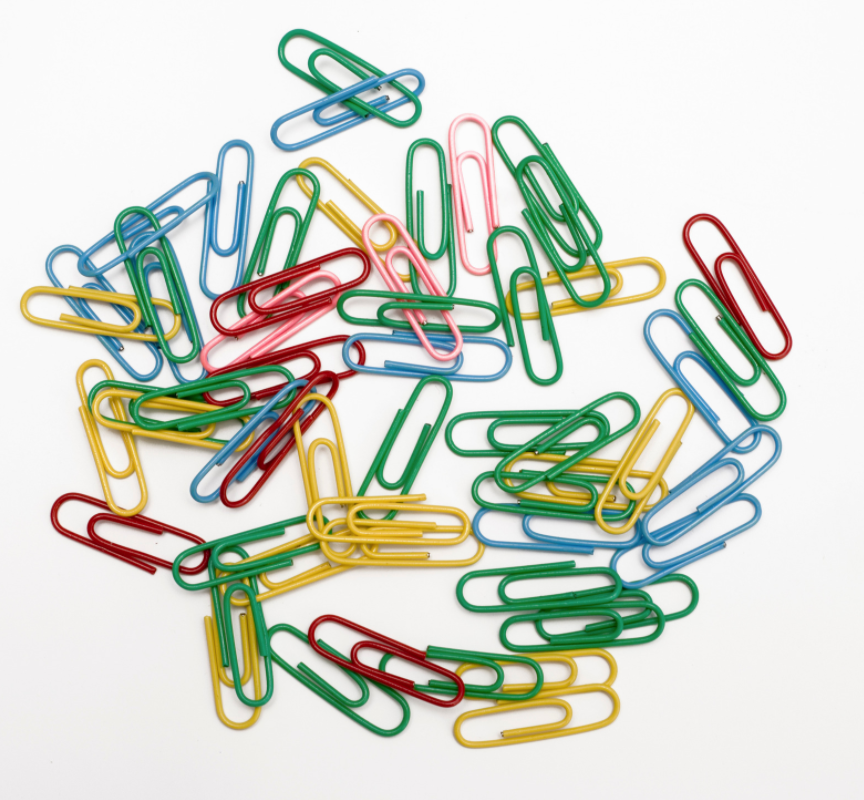
Here’s how to brief it in:
- Let delegates know they will be working in teams in breakout rooms, and that after you’ve briefed the task to everyone the clock will start ticking and they will have a deadline within which they’ll need to complete the challenge. Drip feed the instructions one stage at a time so as not to spoil the fun or influence participants’ choice of random stimulus item.
- Ask delegates to find with one interesting object between them, preferably from outside, and bring it inside or take a photo of it so that the rest of the breakout team can see it on screen.
- Participants are then to work together in their breakout rooms to create a list of 12-15 words that describe their interesting object. One person in each breakout room will need to write these words down. Create some time pressure and allow delegates just a few minutes to get their list together.
- Ask delegates to use all the words that they have listed to create a vision related to the theme of your day in just 2-3 sentences. They must use every word! For example, at an event at for the 2050 Innovation Hub for the maritime industry at Port of Tyne, I asked delegates to “create sentences that describe your vision for the 2050 Innovation Hub”. At a Collaboration in Action training event for Northumbrian Water and its supplier partners, to “create sentences that describe your vision for collaboration as a result of today.”
- Finally, ask each group to read their statements and enjoy the results together!
11. Paper loop challenge energizer
Before the session, ask everyone to bring some old A4 paper and a pair of scissors.
When it’s time for the energizer, brief your delegates to find a way to cut a hole in a single sheet of A4 paper, with no breaks and no joins (i.e. no tape, staples, knots), so that the hole is big enough for a whole person to fit through it.
Give a time limit, or let delegates know that the first team to crack the challenge wins, then open up breakout rooms so that people can work in small groups.
If you need the solution, here it is.
Paper Loop Challenge Energizer – Solution
- Fold a piece of A4 paper in half. Put the paper on the table with folded side closest to you.
- Cut into the folded side, about 1 cm from the left-hand edge, and start cutting straight towards the far side of the paper. Stop cutting about 1 cm before the opposite edge, so you don’t cut all the way across the paper.
- Turn the paper around so the fold is on the opposite side from you. Cut in around 1 cm from your last cut and stop about 1 cm before you get to the folded side.
- Alternate between cutting from the folded side, and the side opposite. Keep your cuts 1 cm apart, and always stop cutting 1 cm before you get to the far side of the paper.
- Cut along the fold of each of the loops EXCEPT the first loop and the last loop. Leave these intact. Don’t cut the first or last loops!
- Carefully pull the paper apart, taking care not to tear it. Open it up to see a large loop big enough for a whole person to step through.
12. Story dice energizer
Story dice are virtual dice with pictures on each side. There are 40 dice with 240 images. Select up to 10 dice on your screen, mixing categories like mystery or Star Wars and roll your story. You can mix categories of dice, and ask delegates to come up with their own stories in line with the theme of your workshop “inspired” by the pictures rolled on the dice.
13. Left-handed mirror writing energizer
Research has shown, though that when we stimulate our brains in new ways, and keep practising with the new stimulus, we strengthen the neural connections in our minds. By repeatedly stimulating the connections in the right brain we can become more agile from a creative perspective.
One quick and easy thing that works well to positively disrupt thinking patterns is left-handed mirror writing – especially if your left hand is your non-dominant hand.
Lucia Cappacchione PhD, an art therapist, found that through various drawing and writing exercises with our non-dominant hand, we can explore our thoughts differently. Her book, The Power of Your Other Hand, is a fascinating read. It is where I first came across left-handed mirror writing, which I tried straightaway and became intrigued with how such a simple exercise can be so powerful.
What is Mirror-Writing?
Mirror-writing is writing letters, words or sentences backwards and in the opposite direction, so that they look normal when reflected in a mirror. Sometimes young children mirror-write naturally as part of their thinking process. Some adults do it consciously, the most famous example being Leonardo da Vinci, who appears to have been fluent and prolific in his output.
At first, practising non-dominant hand mirror writing as an adult feels a bit like being a child who is learning to write again. It can feel very difficult and need more concentration initially than writing right to left with the dominant hand.
It is precisely this effort that generates the positive effects of the activity in firing up those brain cells to generate new connections. It’s certainly a fun and easy thing to do.
Demonstrate left-handed mirror writing, and then set a fun challenge, asking delegates to try it by writing a question with left-handed mirror writing and then writing the answers to the questions as normal.
This works in different languages, alphabets and reading direction. Just ask people to do the reverse of what they would usually do!
14. The What if…? game energizer
Show delegates the ‘Wheel of Fortune’ image below and ask each one to randomly pick a number from the wheel and write it down.
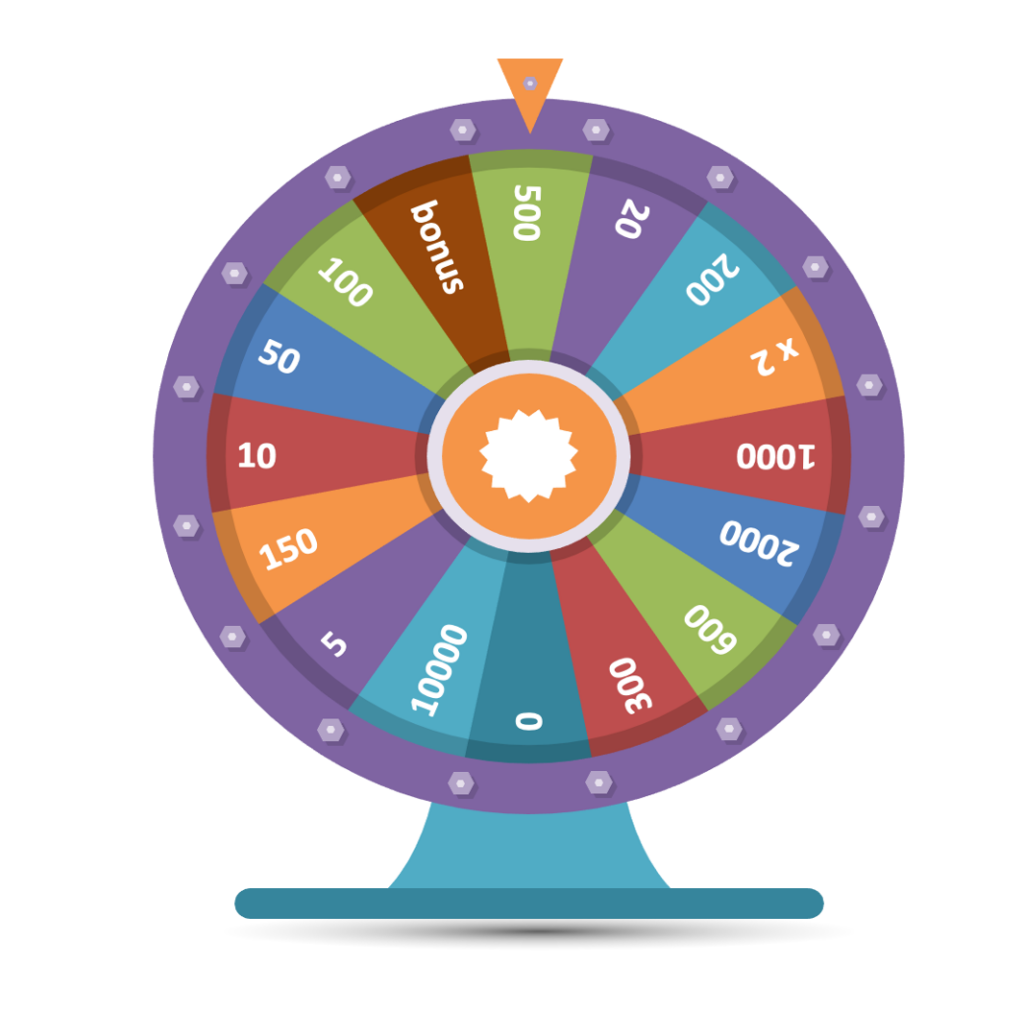
Each number on the wheel has a corresponding question. Some of the questions are random and fun, others are more thought-provoking. Every question is creative.
| ‘Spin‘ | Question |
| 500 | What if you had to rate your commitment to your idea on a 1-10 scale? What number would you give it and why? |
| 20 | What if a story you’ve created in your mind is holding you back? What is it, and why? |
| 200 | What if you could improve your own productivity and efficiency to achieve your idea quicker? What could you do? |
| X2 | What if you could use your top three strengths to help you achieve your idea? What are they and how might you use them? |
| 1000 | What if someone asked you something you do not want them to ask about your idea? What would that be, and why? How would you answer? |
| 2000 | What if you could have the active support of one person who can really make a difference to your idea becoming a reality? Who would that be and why? |
| 600 | What if you had to pitch your idea on live prime time TV in 30 seconds. What key features and benefits would you focus on? |
| 300 | What if you had the opportunity to ‘download’ all the new skills and knowledge you need to achieve your idea? What skills and knowledge would you download? |
| 0 | What if it was guaranteed that the thing(s) that most worry you about your idea were definitely going to happen? How would that change your actions? |
| 10000 | What if a camel were to come in the door right now, wearing a woolly hat, scarf and jumper? What would she say about your idea, and why is she here? |
| 5 | What if your idea was a colour? What colour would it be and why? |
| 150 | What if you had to describe your idea to a five year-old child? What would you say? |
| 10 | What if you were hosting a dinner party to progress your idea? You can invite three famous people. Who would you invite and why? |
| 50 | What if your idea had a name and logo? What would they be and why? |
| 100 | What if you could have an app just for your idea? What are some of the things it would be able to do? |
| bonus | What if you received a big, prestigious award for achieving your idea? Why would you have won it? |
Ask the delegates to answer the questions relating to the numbers they have selected in breakout groups, focusing the overall theme of your online meeting or virtual workshop and working within your time limit.
Ask each group to feedback their insights from the activity when everyone has returned to the main room.
15. Old sayings energizer
Ask delegates to work in teams in small breakout groups for this activity.
Give participants a list of old sayings, like the one shown here, and ask them to come up with as many ideas as possible from these old sayings as potential solutions for your overall meeting theme.
Examples of Old Sayings
- Don’t count your chickens before they’re hatched.
- Don’t put all your eggs in one basket.
- A stitch in time saves nine.
- Actions speak louder than words.
- A journey of thousand miles begins with a single step.
- All that glitters is not gold.
- The early bird catches the worm.
- Fortune favors the brave.
- Hope for the best, prepare for the worst.
- Where there’s a will, there’s a way
For example, for the saying “Don’t put all your eggs in one basket”, participants might come up with ideas like these, depending on the session.
Business strategy – We over-rely on product x, or customer y for our sales. Let’s look at diversifying by exploring more possibilities, such as [delegates would give their examples here].
Leadership training – A strength overplayed becomes a weakness. We might not put all our eggs in one basket by using our strengths wisely and by being clear on our development areas.
Team building – We only ever get together in monthly team meetings that are scheduled. We could experiment more with informal virtual drop-in sessions, online social events and more.
16. Alphabet of ideas energizer
Ask delegates to write the letters A to Z inclusive on a virtual whiteboard and come up with at least one idea for every letter of the alphabet in response to your theme or challenge for the day. The idea should begin with the letter in question, so you might need to be flexible and accept some creative approaches!
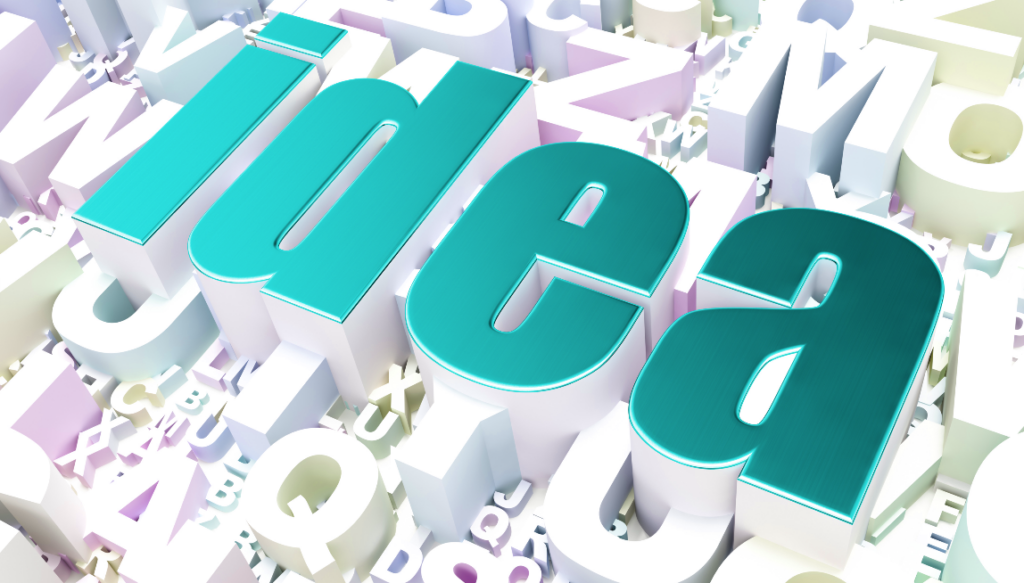
You can also use this format for a detailed end of session review. Instead of ideas, ask delegates to come up with a lesson learned from the day for each letter of the alphabet.
17. Metaphors energizer
Sketching and using a pen and paper activate different parts of our screen from typing, using words and looking at a screen. This metaphor energizer is great for waking up different parts of the brain, and getting everyone thinking differently.
Explain that a metaphor is a figure of speech that describes something by saying it is something else, for example:
“This project is a piece of cake.”
“Fred is a busy bee.”

Set the activity in the context of the theme or purpose of your session and ask participants to individually sketch a metaphor for how they see the current situation.
Then ask delegates to sketch a metaphor for how they think the situation might or should be in the future.
Ask delegates to share their metaphor sketches in breakout groups and then work collectively to write down the individual steps to get from the current metaphor to the future one.
18. Creative storyboard energizer
A storyboard is a framework for planning a narrative. Each ‘frame’ of the story is sketched out, so that the story is shown by the whole sequence of frames, in a useful, creative way of visually presenting information and ideas.
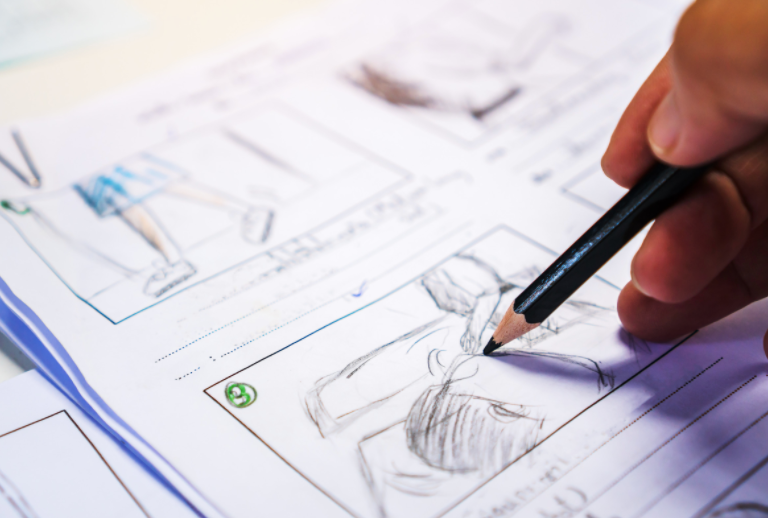
Give participants access to a virtual whiteboard and ask them to work together in breakout groups to create a 6-frame picture storyboard relating to the theme of your session:
1. Draw the current position in the first box.
2. Draw the ideal / target position in the last box.
3. Now fill in the boxes in between with drawings of how you will get from the current to the ideal.
4. Capture key steps in words under each drawing
This is can be a useful visual technique that helps to create a clear image of the goal and achievable steps towards it, overcoming obstacles on the way.
Make sure that delegates have fun drawing and uploading gifs and images as a team – it doesn’t have to be a great piece of art, that’s part of the enjoyment!
If you want to look at some fantastic examples of storyboard, have a look at Pixar and see some great examples of how they actually use storyboarding for their animations.
19. Find a picture energizer
Ask participants to quickly leave their desks to find a picture – such as a photo, image in a magazine, piece of art – that represents them and how they feel about the topic that you’re working on in the session. A physical picture is preferable to a virtual one, as ideally you want people to move.
When everyone is back, ask each person to share the picture they have chosen, and why they have chosen it.
20. Lucky dip conversation starter energizer
You’ll need two bowls, buckets or hats.
In one, have the names of each participant written on separate pieces of paper, before your meeting starts.
In the other, have different conversation starter, again on individual pieces of paper.
Randomly select a name and a conversation starter and ask the person to answer the question.
Make the questions fun, surprising and engaging.
21. Brainteaser energizer
Split everyone into teams and ask them to solve a few brainteasers like these against the clock. My favourite is “Find the Bunny”. The fastest team with the highest score wins.
22. Gaminar energizer
Have a look at Gaminar for a really creative team energizer solution. Participants play micro games and go through an immersive experience of discovery-based learning.
I’m pretty new to Gaminar, to be honest, but am loving the potential and creativity of it.
Gaminar’s bite size gamification approach addresses key corporate topics and transforms your online meeting or virtual workshop by enhancing participants’ focus through Escape Room, Pixstory, Expressive and Survival Game experiences.
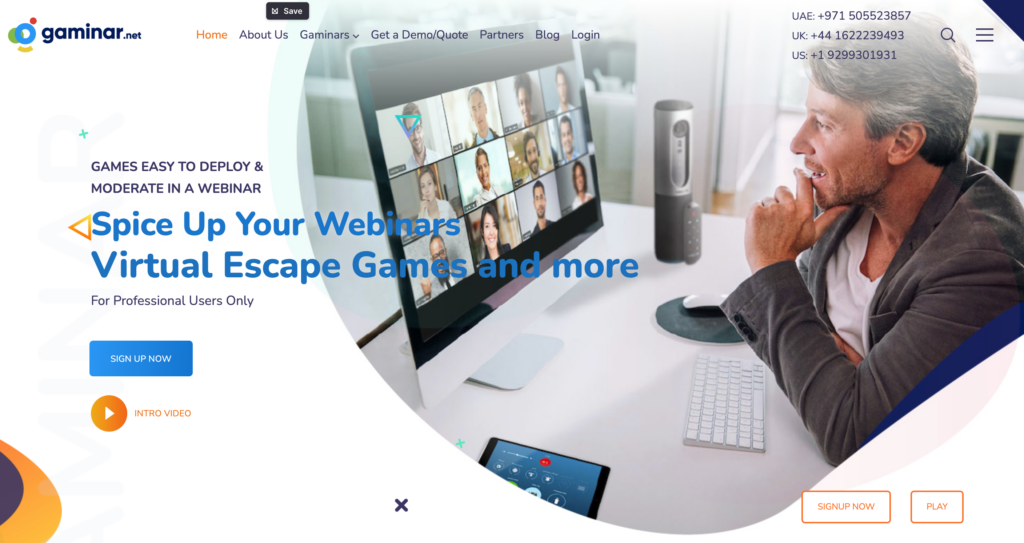
Give Gaminar a go, I’d love to hear what you think of it.
23. Song wars energizer
This one is good for creativity and getting people thinking
Split delegates up into small teams and ask them to say hello to their team members.
Pick one of these words that are common in pop songs:
- Baby
- Dance
- Moon
- Walk
- Power
- Sun
- Rain
Give delegates a time limit (3-5 minutes is plenty) and ask them to write down as many song titles as they can that include the word you’ve chosen, with bonus points if they include the artist
24. Pop quiz energizer
This one is dead easy – simply compile a playlist of upbeat music of your choice and ask your participants to name the song and the artist. You can even encourage and give extra points for singing and dancing along!
25. Catchphrase online energizer
Do you remember the Catchphrase TV quiz show?
Why not create your own visuals using a tool such as canva.com and host your own Catchphrase quiz energizer? You could also use an online Catchphrase generator, although I prefer to do my own, as the visuals in the online tools aren’t that great.
Can you guess the Catchphrase in the image below? Let me know in the contact us form and if you’re correct I will send you a fun prize.

26. Speed networking energizer
Create a number of creative questions and talking points, one for each Speed Networking round, and share the list with your participants.
Host a number of rounds of Speed Networking, where delegates use the talking points, questions and prompts in very small groups in breakout rooms, moving participants between rounds. This is currently easier to do in Zoom than in Microsoft Teams, despite Microsoft Teams’ recent breakout room changes, but is still feasible. Each Speed Networking round needs to last for only a few minutes.
Next steps
Join my free Idea Time for Workshop Facilitators private Facebook Group
If you’re interested in facilitation and developing your professional practice as a facilitator, I’d love you to come and join me in my free, private Facebook Group, Idea Time for Workshop Facilitators.
As well as a fantastic community of likeminded people, you will get access to free facilitation trainings, tools, techniques and time savers.
Get my free Supercharge Your Virtual Engagement on Zoom Video Course for Online Meetings
If you’re a Zoom workshop facilitator, click here to get my free Supercharge Your Virtual Engagement on Zoom Video Course.
If you’d like to book us to deliver some professional virtual facilitation for you and your team, or would like a one-to-one virtual facilitation training and coaching session, you can find out more about what we do here, or contact me direct using the form below and I’ll get straight back to you.
Hope to hear from you in so that we can chat about all things energizers, online meetings and virtual facilitation! x

